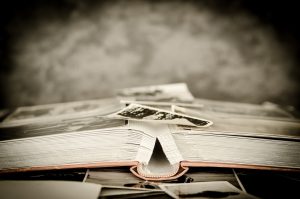
“A picture is worth a thousand words,” they say, and we believe it is true. Since the mid-19th century, photojournalism has been consistently changing the way we observe the world. It has helped us learn untold stories and see things we would not otherwise be able to see.
But what is photojournalism? As evident by its name, photojournalism is a form of journalism that uses photographic images to report on a news story. While initially the term referred to photos only, nowadays it has evolved a lot. Today, photojournalism often encompasses broadcast journalism, where reporters use video to tell a story. Besides, social media and the Internet have changed the very concepts of journalism and news reporting, so new and unique forms of photojournalism arise all the time.
In the article below, we will tell you about the basics of photojournalism. We will travel across history to arrive at modern times and discuss the latest trends. Read below and enjoy our tour across the mesmerizing world of photojournalism!
How Is Photojournalism Different from Other Forms of Photography?
This is a very common question. Nowadays, literally everyone can shoot photos and videos and post them instantly on the Internet. Besides, photography has penetrated many areas of life like art, social and everyday life, etc., thus creating an amazing symbiosis with other genres.
So, how does photojournalism differ from fields like documentary photography, celebrity photography, war photography, sports photography, and so on? Well, there are two major ways to tell if an image is a piece of photojournalism.
One is to observe whether it contributes to the news and serves a broader social purpose to inform people. The other is to consider the person who has taken the image and their professional conduct. Photojournalists, as any other journalists and reporters, need to observe a strict set of professional rules and abide by a code of ethics.
Is Photojournalism Art?
There has been an ongoing debate on this topic. By definition, the main goal of photojournalism is to serve a civic duty. It informs and “brings the news” to the public by reporting on the reality of affairs. While exceptional photojournalism does involve a lot of creativity, just like art, it cannot and should not stray from reality. The latter is what art often does.
That said, the history of photojournalism involves a lot of professionals who have been regarded as true artists. Some of the most prominent ones include Henri Cartier-Bresson, Dorothea Lange, and Arthur Rothstein.
Photojournalism: A Brief History

In the early days of its invention, the camera was seen as a tool to document reality. Louis Daguerre, about whom we talked in our article about street photography , and his peers mostly produced studio portraits or images of public spaces.
However, as the saying goes, crisis brings opportunity. The Crimean War that raged between 1853 – 1856 gave the rise to photojournalism as we know it today. Back then, pioneers Carol Szathmari and Roger Fenton used their cameras to document the war and its grave consequences. This had a tremendous social impact and caused an anti-war outburst in many parts of the world.
Fenton’s most famous photograph “The Valley of the Shadow of Death” became iconic. Fenton presented it, along with many other images from Crimea, to Queen Victoria, French Emperor Napoleon III, and other royal highnesses, who were quick to grasp the social importance of photojournalism.
The American Civil War also had its photojournalist hero. Matthew Brady was a very successful New York portrait photographer. He was among the first to establish his own studio in 1845. However, 1861 met him with a new demand – to photograph those conscripted to fight in the American Civil War.
That is how Brady developed his interest in war photography. President Abraham Lincoln himself allowed Brady to accompany the troops to the battlefields on the condition that he would cover his own travel expenses. Brady formed a team of 24 photographers, who produced the celebrated images of the First Battle of Bull Run.
World War II was also pivotal for the development of photojournalism and its role in modern society. It was then that photographer Margaret Bourke-White became the first woman to accompany US Air Corps bombing missions and the only Western photographer at the Battle of Moscow.
Some other noteworthy photojournalists not mentioned in the paragraphs above include:
- Timothy H. O’Sullivan
- John Thomson
- David Seymour
- Hector Rondón Lovera
- Josef Koudelka
- James Natchwey
- Devin Allen
Trends in Photojournalism
Photojournalism has developed a lot since its early days described above. Its social impact continues to grow. This is especially true now that we have easy and affordable access to advanced technologies and the Internet.
New trends have arisen. Social documentary was among the first to have appeared as far back as the 1930s. Photo essays also became very common since the dawn of photo magazines.
Technology has also significantly changed the direction of photojournalism. One such example was set by the Chicago Tribune. The newspaper laid off their photojournalists and instead started commissioning freelance iPhone photographers. If you want to know more about the future of photojournalism, we have an interesting video for you:
We would love to know your thoughts on photojournalism. Do you think it is an art? How do you consider it will develop in the future? Feel free to get back to us and share your opinion!
